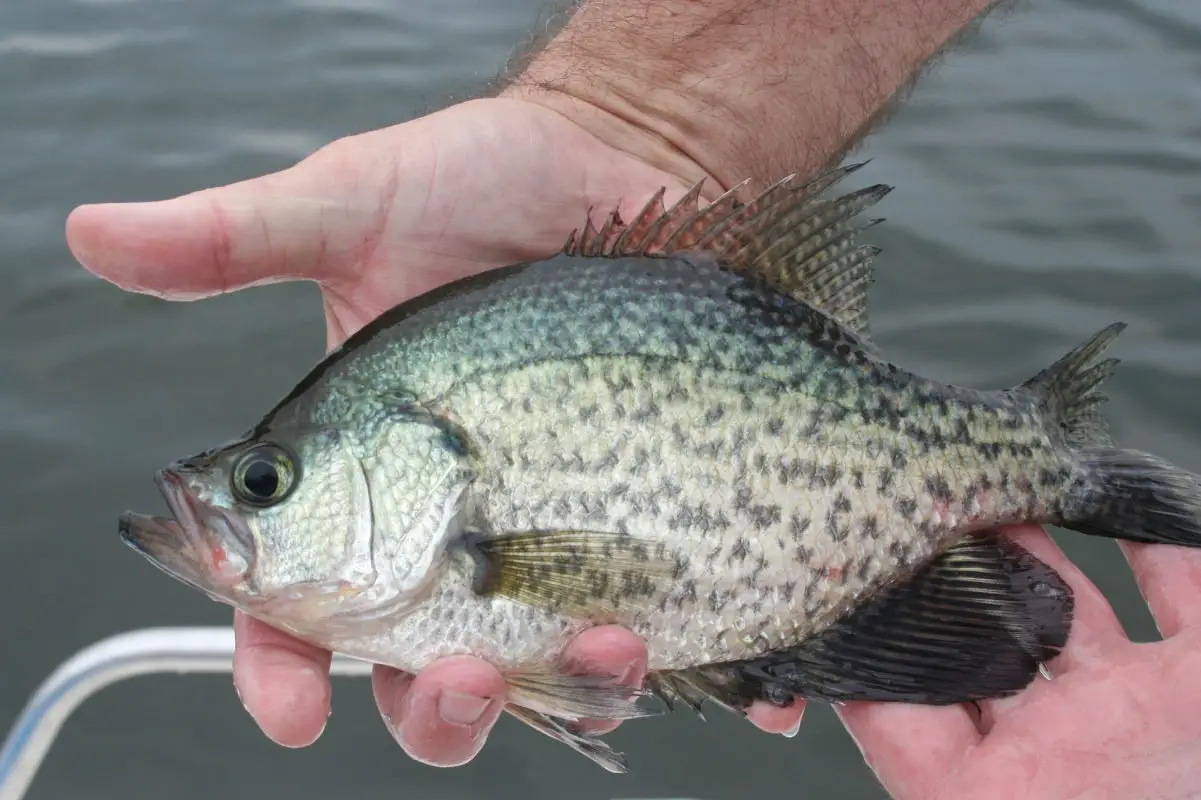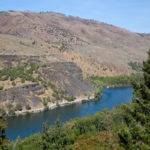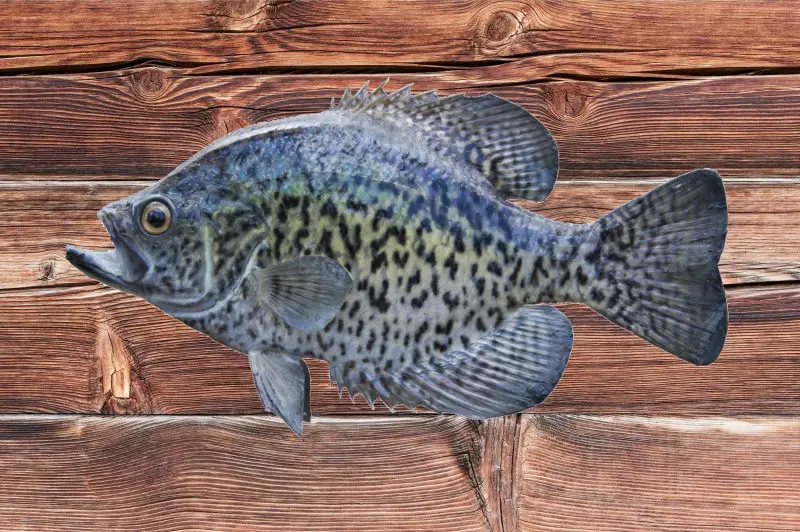If you have never had the opportunity to catch a crappie, you might be missing out on some of the most exciting types of pan-fishing out there. Even though crappies are classified as a pan-fish, they can put up quite a fight, and sometimes, they can grow to be a pretty decent size. The best part of catching Crappie is that once you catch one, there is a chance you just fell into a school of them, so get your line back into the water, and you may get your limit in just a matter of a few minutes.
So, if you have never caught a crappie, or maybe you have before but didn’t realize it, how do you recognize that a fish is a crappie? Let us discuss some of the physical features of crappies that will make it easier for you to identify your catch in the future.
What does a Crappie look like?
Two main crappies are commonly found in North America: the Black Crappie and the White Crappie. Both are similar in size and shape, but where they differ can be seen in their color and patterns.
White Crappies are generally a silver color with shades of brown and green along their back. They also have lateral stripes along their sides that can be white. Black Crappies have silver-gray and green along their backs and black spots all over their body. Black Crappies do not have any lateral stripes on their sides, and they are much darker in color.
Some other differences between Black and White Crappie include differences in the dorsal fin. When you look at the dorsal fin of a White Crappie, you may notice somewhere between five or six fins or “spikes” that make up the fin. Black Crappie typically have more of these spikes in the dorsal fin. Black Crappie can have seven or even eight of these spikes in the dorsal fin area.
Another detail about the dorsal fin to highlight is that the dorsal fin of a White Crappie will have a smooth arch where the dorsal fin of a Black Crappie will be extremely sharp and needle-like.
When you catch a Black Crappie, you should take extra care to avoid placing your hand directly on the dorsal fin. Doing so will only cause some mild discomfort, however, if you run your hand from the head of the fish down its spine, you can close the dorsal fin and avoid pricking yourself with the sharp needle-like spikes that make up the dorsal fin of the Black Crappie.
Another difference between the Black and White Crappie is in the shape. Although the shape between the two types of Crappie is hard to distinguish, if you hold them up side-by-side, you can see a slight difference. Black Crappie tend to have a little bit of a more compact and rounded shape where White Crappie can look a bit more elongated. Meaning, White Crappie look narrower and a little bit skinnier, but longer.
A feature that both the Black and White Crappies share that helps set them apart from other types of panfish can be seen in the shape of their mouths. Other panfish like Sunfish, Bluegills, Pumpkin Seeds, etc., tend to have smaller mouths that only open slightly, where then the Crappie has a mouth similar to the Largemouth Bass.
Although the mouth of the Crappie is not nearly as big as the Largemouth Bass, they share similar features as both of their mouths are comprised of a system of linked muscle and bone that allows the fish to open the mouth much wider than other fish species. Once the mouth is open, both the Largemouth Bass and the Crappie use a vacuum-like sucking action to inhale minnows, worms, flies, insects, and whatever else they choose to prey on. The hinged jaw and larger mouth are features that both the Black and White Crappie share that should help you to easily identify them when caught.
Below you will notice a diagram detailing the typical features of a Crappie.

How many species of Crappie exist?
Although two main types of crappies can be found throughout North America, the Black and the White Crappie, there are actually seven different species of crappies in existence.
The seven species of crappies are:
- The Triploid or Magnolia Crappie
- The Gold Crappie
- The Stock-hybrid Crappie
- The Natural-hybrid Crappie
- The Black-nosed Crappie
- The White Crappie
- The Black Crappie
Although there are seven different species of Crappie, you are most likely going to catch either a Black or White crappie if you are fishing the inland waters of North America. Black and White Crappies are seen as the most resilient species of Crappie and the most migratory. Some crappie can migrate hundreds of miles through systems of interconnected streams, lakes, rivers, and reservoirs before spawning or settling into an area. This is why they are the most abundantly found species of Crappie. Also, this is why they are found in so many different regions throughout North America.
The other Crappie species do exist in certain regions as well, but often this is due to a body of water being “stocked” with that particular species. Take the Magnolia Crappie, for example. Often these Crappie are raised in a hatchery where they are taken care of and fed until they are a particular size. Once they reach the appropriate size, the Department of Natural Resources will begin to introduce them into bodies of water identified as containing an aquatic ecosystem that may allow the species to thrive.
What is the most common species of Crappie?
The most common species of Crappie are the Black and White Crappie. They can be found in abundance in almost every region east of the Mississippi River valley aside from the uppermost parts of New England. They are also found widely throughout Central and Eastern Canada. The Black and White Crappie are the most common due to their ability to migrate long distances and their overall resilience. Their diet is diverse, and they feed on almost anything, making their ability to adapt to different aquatic ecosystems superior to other fish species that have more strict diets.
Conclusion
If you are fishing a body of water anywhere in the Central or Eastern portion of North America, there is a good chance you may catch yourself a Crappie. Or many. Possibly by accident. Do not take these fish lightly. They taste great, and they can be a lot of fun to catch.
Remember that if you do catch a Crappie, you can distinguish them from other panfish by the shape of their mouths and their coloring. Also, you can always tell the difference between the two most common species of Crappie, the Black and the White Crappie, by their slight difference in shape and by the number of spikes in the dorsal fin.






